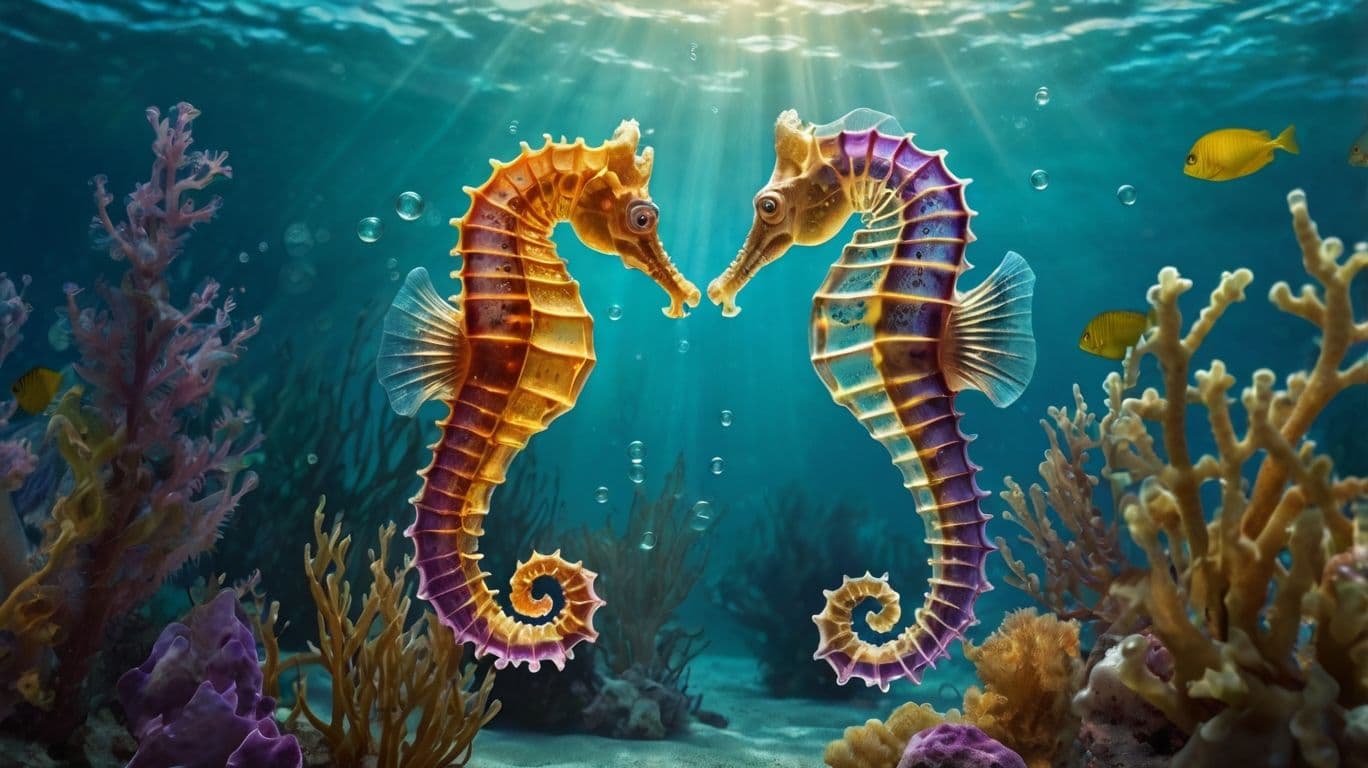At first glance, they don’t even look like fish. With their curled tails, horse-like faces, and upright swimming style, seahorses seem more like magical creatures than ocean animals. But what’s really wild? It’s how they live, love, and raise their young.
Here’s why seahorses are some of nature’s most fascinating oddballs:
🧔 The Dads Give Birth. Seriously.
In the world of seahorses, males carry the babies.
Yes — it’s the dads who get pregnant.
Female seahorses deposit eggs into a special pouch on the male’s belly. Then, he fertilizes them and carries them for weeks, adjusting the pouch’s salinity to match seawater. When the time comes, he goes into full labor, giving birth to up to 2,000 tiny babies!

Talk about breaking gender stereotypes.
🔁 They Mate for Life
Many seahorse species are monogamous, staying with one partner for a long time — sometimes for life. Each morning, couples perform a little dance together, twisting tails and changing colors to strengthen their bond. It’s equal parts romance and survival strategy.
🏇 They Don’t Have Stomachs
Seahorses are inefficient eaters — they don’t have stomachs, so food passes through them really quickly. This means they need to eat constantly, slurping up tiny shrimp and plankton all day with their straw-like snouts.
🌊 They’re Terrible Swimmers
Despite living in water, seahorses are some of the worst swimmers in the ocean. They rely on a small dorsal fin on their back to flutter them forward and tiny pectoral fins near their head to steer. A strong wave can send them flying. That’s why they often anchor themselves to sea grass or coral with their tails.
🛡️ They Have Bony Armor
Seahorses don’t have scales like most fish. Instead, they’re covered in a kind of bony armor, making them harder for predators to eat. This natural exoskeleton also means they can’t move their bodies much — so they rely on stealth and camouflage instead.
🌍 From Myth to Science
Throughout history, seahorses have appeared in ancient legends, coins, and art — often linked to magic and transformation. Today, scientists study them for their unique biology and their role in fragile ocean ecosystems.
But with rising pollution and habitat destruction, seahorses are now vulnerable or endangered in many parts of the world.
💬 Tiny Horses, Big Mysteries
From male pregnancy to magical mating rituals, seahorses remind us that nature doesn’t always follow the rules — and that’s what makes it so incredible.



